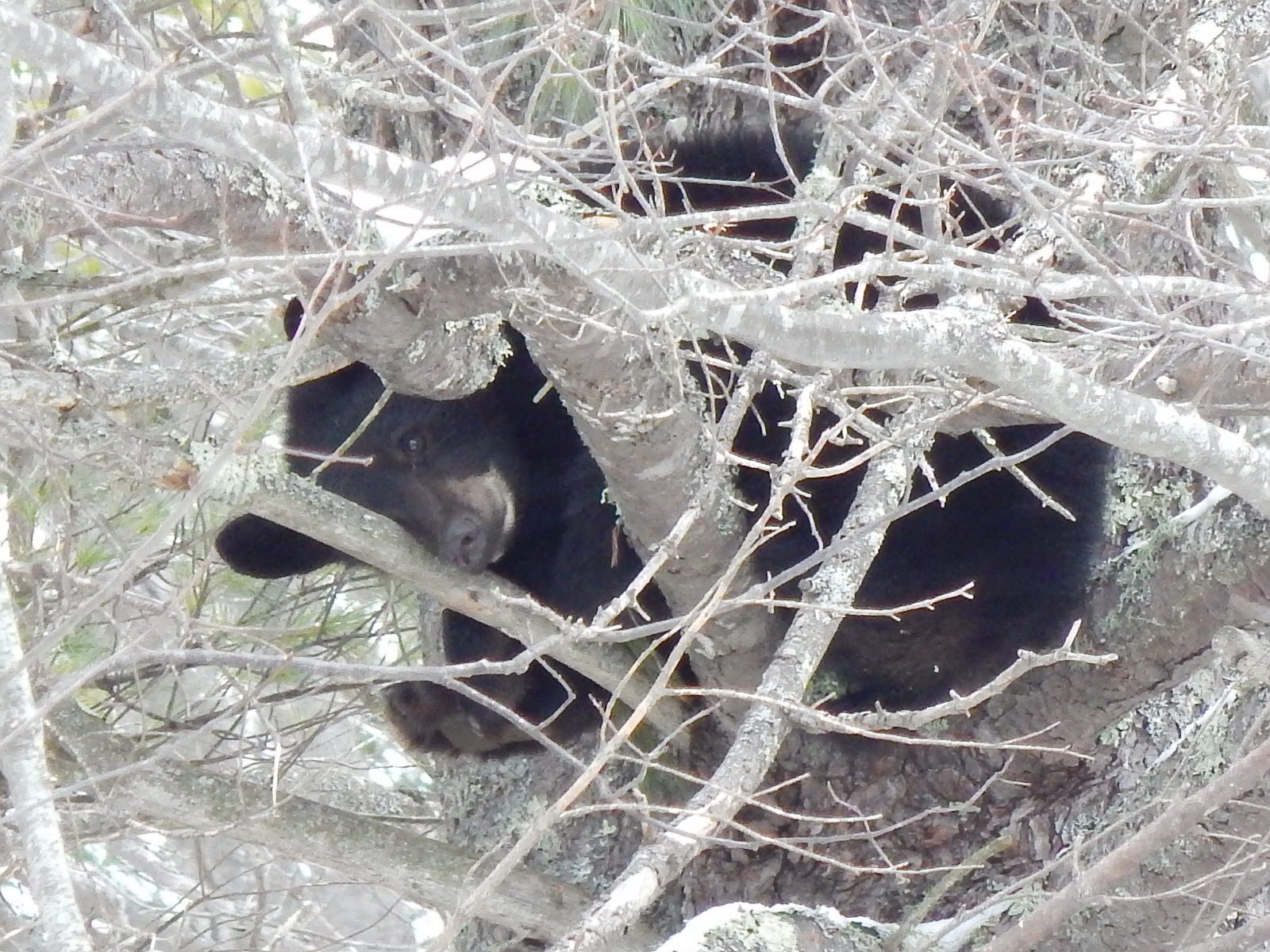Nature Notes: Fantastic Fall Facts
New Hampshire Deer Hunting Season
Participants in our mid-November beaver workshop at Moose Meadows wear blaze orange to be safe. The fire was to keep warm and the marshmallows were for roasting! Photo: Debra Marnich
The fall deer hunting season is upon us. Be aware that opening and closing dates vary from county to county throughout New Hampshire. CLC properties are not posted as “No Hunting”—they are public access, multi-use lands. A hunter may have the ability to hunt a CLC property or a neighboring property. Many hunters have given the CLC a courtesy call to let us know their whereabouts. If a deer hunter finds a property desirable to hunt, that, in turn, reveals many interesting facts. First, and most obvious, it is an indication that the deer population is strong. If the game population is strong, the habitat is excellent, and chances are, on a landscape level, the arrangement of habitats is also excellent and there is good habitat connectivity. These factors weave together to create highly desirable habitats and environments for other nongame or threatened or endangered species, as well. Everything is connected in nature. One million acres of public land are open for hunting and recreation in New Hampshire. For outdoor enthusiasts, the safe choice is to wear blaze orange during the entirety of hunting season. Continue the outdoor journey this fall in blaze orange and enjoy!
Bird feeders & Bears
Mama bear. Photo: Debra Marnich
Every autumn, roughly 5000 black bears (Ursus americanus) in New Hampshire are on a mission to consume as much fat and protein as possible to prepare for the winter season ahead. In many cases, black bears will consume 20,000 calories a day and put on 30 percent extra body weight to survive the long winter months. The scientific term for this excessive eating is called hyperphagia. Hard mast—nuts like acorns and beech nuts—is high in protein and fat and makes up the majority of the fall bear diet. In New Hampshire this year, very low numbers of beech nuts and acorns are being produced. This reduction in available food resources means it’s extra important to follow the suggested bird feeder time frame from New Hampshire Fish and Game: Take your bird feeders in from April 1 to December 1. Safe and less expensive alternatives to bird feeders include avoiding the fall clean-up of gardens and plants thus leaving natural seed for the birds, and also many nesting opportunities for our well-respected insect friends. Please, support and protect our beautiful black bear population in New Hampshire.
Baby bear. Photo: Debra Marnich
Fall Ticks
Be aware that ticks are still active well into November and December if the weather remains fair with high temps that hover around 40 degrees. Ticks are most active in grassy areas, thick brushy early successional areas, wetland forests, and in rain or wet conditions. The best line of defense you can have (other than chemical) is lightly-colored clothing so you can effectively identify a tick and remove it. You can find additional information on tick management in New Hampshire HERE.
Beavers: Essential Ecosystem Engineers
CLC Stewardship Director Debra Marnich points out a beaver lodge along the Chocorua River at the CLC’s Moose Meadows. Photo: Nora Schwartz
Beaver pelt. Photo: Debra Marnich
On Saturday, November 19, Deb Marnich, CLC Stewardship Director, presented a workshop showcasing North American beavers (Castor canadensis), ecosystem engineers par excellence, gentle herbivores, and North America’s largest rodent. Participants discovered the wonders of beaver anatomy, adaptations for survival, habitat, food and shelter requirements, family structure, communication methods, predators, and the life history of beavers in North America.
Beaver lodge in early fall with no food cache. Photo: Debra Marnich
Beaver lodge in late fall with food cache located to the left of lodge. Photo: Debra Marnich
Banner image: Mama bear. Photo: Debra Marnich



